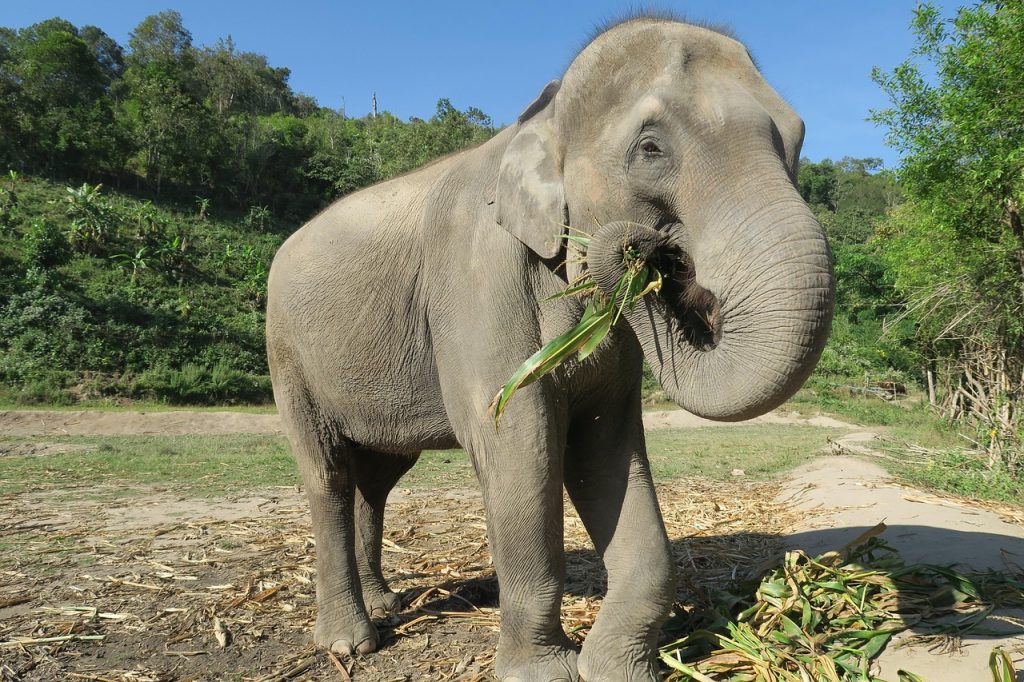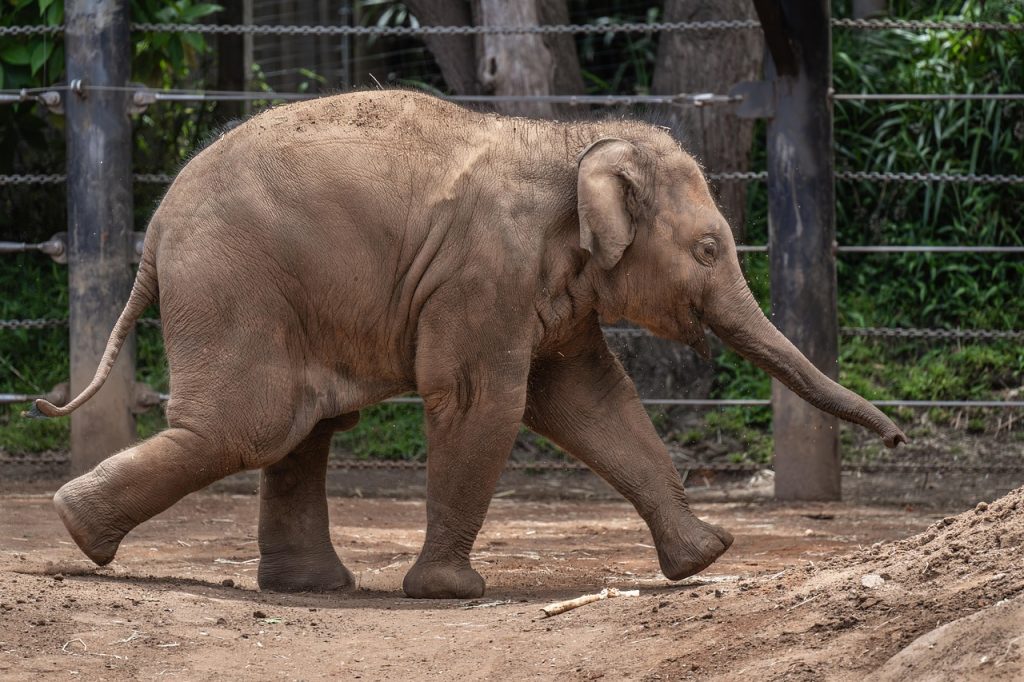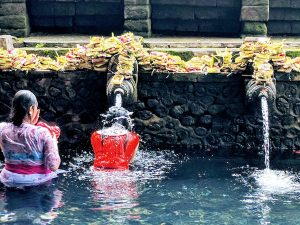Bali is famous for its beaches, temples, and rice terraces — but few travelers realize that this small island also offers an extraordinary opportunity to meet one of the most majestic creatures on Earth: the elephant. Deep in the lush highlands north of Ubud lies the Elephant Sanctuary Bali, often known as the Mason Elephant Park & Lodge or the Elephant Safari Park in Taro.
More than just a tourist attraction, this sanctuary blends conservation, education, and meaningful encounters between humans and elephants. However, as with any wildlife tourism, it’s important to approach your visit with understanding and respect — not only for your own enjoyment but for the welfare of the elephants themselves.
This comprehensive guide explores everything you need to know before visiting: the sanctuary’s origins and mission, the ethics of elephant tourism, activities you can join, what to bring, how to prepare, and how to ensure your visit supports the elephants’ well-being.
The Origins of Elephant Sanctuary Bali

The Elephant Sanctuary Bali began as an effort to provide a safe home for displaced Sumatran elephants — a critically endangered subspecies of the Asian elephant. As forests in Sumatra were cleared for plantations and settlements, many elephants lost their natural habitat. Some wandered into villages, causing conflicts that often ended tragically for the animals.
To protect them, a group of conservation-minded individuals decided to create a haven in Bali, a place where elephants could live in a semi-natural environment while being cared for by experienced mahouts (elephant keepers). Over time, the sanctuary evolved into an educational and conservation center, allowing visitors to meet these elephants up close and learn about their plight in the wild.
Today, the sanctuary in Taro, near Ubud, houses dozens of rescued elephants in a lush, landscaped setting. Its mission is twofold: to give these elephants a better quality of life and to raise awareness about their conservation needs through carefully managed tourism.
The Setting: Taro, Ubud Highlands
The sanctuary is located in Taro Village, about 30 minutes north of Ubud. The region’s cooler climate, dense jungle, and tranquil atmosphere make it ideal for elephants. Unlike the coastal areas of Bali, Taro sits amid forests and rice fields, offering a peaceful environment where visitors can hear the calls of birds, smell the earthy air, and watch elephants wandering against a backdrop of mountains and greenery.
The park’s design reflects both Balinese aesthetics and ecological sensitivity. Wide, tree-shaded pathways lead visitors through gardens, ponds, and enclosures, while the elephants’ bathing pools sparkle under the sunlight. The experience feels immersive yet organized — every detail is planned to keep both guests and elephants comfortable.
Also read: Top 10 Architect Services in Bali for Stunning Tropical Designs
What to Expect When You Visit
A visit to the Elephant Sanctuary Bali typically combines education, interaction, and relaxation. Depending on your ticket type or tour package, you might engage in the following activities:
a. Park Walk and Observation
The simplest option is to explore the park on foot. You can watch elephants feeding, bathing, or socializing under the supervision of their mahouts. Interpretive signs provide facts about elephant biology, diet, and conservation challenges. This activity suits visitors who prefer to observe without direct contact, focusing on education and photography.
b. Feeding Sessions
Feeding an elephant is one of the most memorable parts of the experience. Visitors are given baskets of fruits and vegetables — often sugarcane, bananas, or papayas — to hand-feed the elephants. Under the guidance of their keepers, you’ll learn how these gentle giants use their trunks with surprising delicacy. It’s a safe, respectful, and engaging way to connect with them.
c. Bathing and Washing
Known as the “Bathe and Breakfast” or “Jumbo Wash” program, this activity allows you to help bathe elephants in a shallow pool. It’s a joyful and wet experience — elephants love splashing and sometimes playfully spray water with their trunks. The activity is strictly supervised to ensure both animal welfare and visitor safety.

d. Educational Talks and Demonstrations
At set times, guides and mahouts conduct short presentations explaining elephant behavior, conservation efforts, and how elephants are cared for daily. You’ll learn about their diet (which can reach up to 200 kg of food per day), sleeping patterns, and social bonds.
e. Short Elephant Rides (Optional)
The sanctuary has historically offered short, guided elephant rides. These rides take place within the park’s boundaries and are designed to minimize stress for the elephants. However, riding remains a controversial topic among animal welfare advocates — we’ll discuss this ethical dimension later in the article.
f. Elephant Painting and Interaction Shows
Some elephants have been trained to paint or perform simple demonstrations of learned behaviors. While these activities can be fascinating from a training perspective, they are not essential to the experience and may not align with every visitor’s ethical comfort zone.
g. Lodge and Overnight Experience
For travelers seeking deeper immersion, the Mason Elephant Lodge allows guests to stay overnight right beside the elephants’ habitat. Rooms overlook the park, and guests often wake to the sight and sound of elephants starting their day. Lodge packages usually include exclusive early-morning feedings, guided tours, and dining options surrounded by nature.
A Day at the Sanctuary: Sample Itinerary
To help you imagine your visit, here’s an example of a day itinerary for the Elephant Sanctuary Bali:
8:00 AM – Departure from Ubud
A private driver or tour vehicle picks you up. As you ascend into the highlands, the air becomes cooler, and views of rice terraces appear.
9:00 AM – Arrival and Orientation
Upon arrival, you’re welcomed with a drink and an introduction to the sanctuary’s history and mission.
9:30 AM – Feeding and Educational Talk
Meet the elephants up close, learn their names and origins, and hand-feed them while listening to their keepers share personal stories.
10:30 AM – Bathing Activity
Change into suitable clothes and join the elephants for their morning bath. The activity is gentle, playful, and often the highlight of the visit.
12:00 PM – Lunch with a View
Enjoy a buffet or à la carte meal at the sanctuary’s restaurant overlooking the elephant bathing lake.
1:30 PM – Elephant Observation or Short Ride
Optional: take a short guided ride or simply observe elephants socializing in their enclosures.
3:00 PM – Relaxation and Souvenir Shopping
Browse the gift shop, stroll through the gardens, or enjoy an ice cream before your departure.
4:00 PM – Return to Hotel or Continue Exploring Ubud
Many visitors combine this trip with stops at Tegallalang Rice Terraces or Tirta Empul Temple, both nearby.
Ethical Considerations of Elephant Tourism
No discussion of elephant sanctuaries would be complete without addressing ethics. Across Asia, elephant tourism has evolved dramatically over the past decade. Visitors increasingly demand humane, responsible experiences, and sanctuaries are adjusting their practices in response.
a. The Question of Elephant Riding
Elephant riding is one of the most debated topics in wildlife tourism. Supporters argue that short, well-managed rides can provide valuable income for the elephants’ upkeep and do not necessarily harm the animals if performed correctly. Critics, however, point out that training elephants for riding often involves breaking their natural behavior patterns and that carrying humans, especially on heavy saddles, may cause long-term spinal damage.
If you choose to visit a sanctuary that offers riding, it’s crucial to observe:
- Whether the elephants look healthy, well-fed, and unstressed.
- How the mahouts interact with them — gently and with respect, or with coercion.
- Whether elephants are given adequate rest, water, and shade between sessions.
Travelers who prefer a fully ethical experience may opt to skip riding altogether, focusing instead on feeding, bathing, and educational sessions, which offer rich experiences without physical burden on the animals.
b. Training and Entertainment
Some sanctuaries teach elephants to perform simple tricks or paint using their trunks. These activities can generate funds and public interest, but they must be weighed carefully. The most ethical forms of training use positive reinforcement (rewards like food or affection) rather than punishment. As a visitor, ask guides about their training philosophy — sanctuaries that welcome questions are usually the most transparent.
c. The Role of Tourism in Conservation
It’s easy to criticize tourism, but it also provides funding that directly supports elephant welfare. In many sanctuaries, visitor income pays for food, veterinary care, and habitat maintenance. A single elephant can eat hundreds of kilograms of food daily and needs constant care — expenses that tourism can help cover. The key is to ensure that tourism serves the animals’ needs, not just entertainment.
d. Responsible Visitor Behavior
You can help by:
- Never shouting, chasing, or trying to touch an elephant without supervision.
- Respecting the elephants’ personal space.
- Following all mahout instructions.
- Avoiding flash photography or loud noises.
By being calm and respectful, you contribute to a peaceful environment for the animals.
Conservation Impact and Education
Beyond visitor experiences, the sanctuary’s mission includes raising awareness of the Sumatran elephant’s endangered status. Only a few thousand individuals remain in the wild, mostly in fragmented forest patches in Sumatra. Habitat loss, poaching, and human-wildlife conflict are the main threats.
Educational programs at the sanctuary aim to connect these global issues with individual action. By meeting elephants in person, visitors often develop a stronger emotional connection and a deeper understanding of the importance of protecting them in the wild.
In addition, some of the sanctuary’s initiatives involve:
- Feeding and enrichment programs to improve elephant welfare.
- Veterinary care and nutrition management led by experienced staff.
- Reforestation and awareness campaigns to support long-term conservation.
Visitors are encouraged to donate or spread awareness after their trip — turning tourism into a positive force for conservation.
Practical Information for Visitors
a. Location and Accessibility
- Address: Taro Village, Tegallalang, North Ubud.
- Travel Time: 30 minutes from central Ubud, about 1.5–2 hours from southern Bali.
- Transport: The easiest option is to hire a private driver or join a tour. Roads to Taro are narrow but scenic, passing rice fields and rural villages.
b. Opening Hours
The park typically opens from morning until early evening. Arriving early is best, as elephants are most active in the cooler hours before noon.
c. Ticket Options
Entry fees vary depending on the activities you choose. Options may include:
- General admission (park entry and observation)
- Feeding session packages
- Bathe & Breakfast program
- Full-day adventure packages
- Lodge stays with all-inclusive experiences
It’s advisable to book in advance, especially during peak tourist months (June–September and December–January).
d. What to Wear
- Light, breathable clothing suitable for tropical weather.
- A hat, sunscreen, and insect repellent.
- Comfortable walking shoes (the park paths can get muddy).
- Swimwear and a change of clothes if participating in bathing activities.
- A waterproof bag for your camera or phone.
e. Health and Safety
All interactions are closely supervised by mahouts. Always maintain a safe distance unless invited closer. If you have allergies or medical concerns, inform staff before participating in feeding or bathing activities.
Photography Tips
Elephants are naturally photogenic, and the sanctuary’s lush setting offers stunning backdrops. Here are some tips to capture the best moments:
- Natural light: Morning and late afternoon provide soft, golden light.
- Perspective: Lower your camera angle to emphasize the elephant’s size and presence.
- Details: Focus on textures — wrinkles, eyes, and trunks make powerful close-ups.
- Respect boundaries: Never provoke an elephant for a reaction. Patience yields better, more authentic images.
Staying Overnight: The Lodge Experience
For a truly unique experience, consider staying overnight at the Elephant Lodge within the sanctuary. This boutique accommodation offers luxurious rooms overlooking the elephants’ habitats. Imagine waking up to the gentle rumble of elephants just beyond your balcony.
Guests enjoy privileges such as:
- Early morning feeding sessions before regular visitors arrive.
- Guided night walks to observe elephants at rest.
- Complimentary breakfast and spa options.
Staying at the lodge also allows more time to relax without rushing through activities, making it ideal for honeymooners or families seeking a slower, more immersive experience.
Nearby Attractions
Because the sanctuary sits in the Ubud highlands, it’s easy to combine your visit with other attractions:
- Tegallalang Rice Terraces: A short drive away, famous for its scenic landscape and cafes.
- Tirta Empul Temple: One of Bali’s most sacred water temples, known for purification rituals.
- Gunung Kawi Temple: An ancient rock-cut shrine complex nearby.
- Ubud Art Market: Perfect for shopping after your nature-filled morning.
Combining the sanctuary with one or two of these spots makes for a full and balanced day trip.
Responsible Travel: Supporting the Right Kind of Sanctuary
Before booking, it’s worth reflecting on the type of experience you want to support. Elephant sanctuaries exist along a spectrum — from purely observation-based conservation centers to interactive parks designed for tourism.
If you value hands-off conservation, focus on observation, feeding, and education rather than rides or performances.
If you value human-animal connection, choose programs that allow elephants freedom to choose whether to engage.
The best sanctuaries are transparent, animal-centered, and educational. They use tourism as a means to fund care, not as the primary goal.
Also read: Top 10 Interior Design Companies in Bali for Luxury Homes and Resorts
Making Your Visit Meaningful
To make your visit truly impactful:
- Ask questions: Learn each elephant’s story — where it came from, how old it is, what its personality is like.
- Donate or adopt: Some sanctuaries offer symbolic adoption programs to support specific elephants.
- Spread awareness: Share what you’ve learned about Sumatran elephant conservation.
- Consume mindfully: Avoid buying ivory or elephant souvenirs elsewhere in Asia — even small choices matter.
When tourism is guided by empathy, it can become a force for good, transforming visitors into advocates for wildlife protection.
The Future of Elephants in Indonesia
The long-term survival of elephants in Indonesia depends on more than sanctuaries — it requires habitat preservation, anti-poaching efforts, and community education. Sanctuaries like the one in Bali serve as ambassadors, bridging the gap between people and nature. By experiencing elephants up close, visitors often develop a lasting sense of responsibility for their protection.
Over time, the hope is that sanctuaries will evolve further — becoming places of rehabilitation, research, and rewilding rather than permanent captivity. Every visitor plays a small part in shaping that future through their choices and awareness.
Final Thoughts
A visit to Elephant Sanctuary Bali is far more than a photo opportunity; it’s a chance to connect deeply with one of the most intelligent and gentle species on Earth. As you watch them bathe, feed, or simply stand in quiet dignity, you begin to sense their emotional depth — their patience, memory, and calm strength.
Handled thoughtfully, elephant tourism in Bali can be a mutually beneficial experience: humans gain insight and wonder, while elephants receive care and safety in return. The key lies in mindfulness — choosing responsible activities, respecting boundaries, and supporting sanctuaries that put animal welfare first.
If you go with compassion and curiosity, you’ll leave not just with beautiful photos, but with something rarer: a renewed sense of respect for nature’s grandeur and a deeper understanding of our shared responsibility to protect it.

Rafini
Rafini is a seasoned marketing sales expert with over 15 years of experience in the hospitality industry, specializing in commercial renovation in Bali. Having honed her skills at renowned establishments like Accor and Anantara, she possesses a deep understanding of client needs and market dynamics.
Currently serving as a Regional Manager, Rafini excels in driving sales strategies and fostering strong relationships to enhance brand visibility and profitability across her region.





